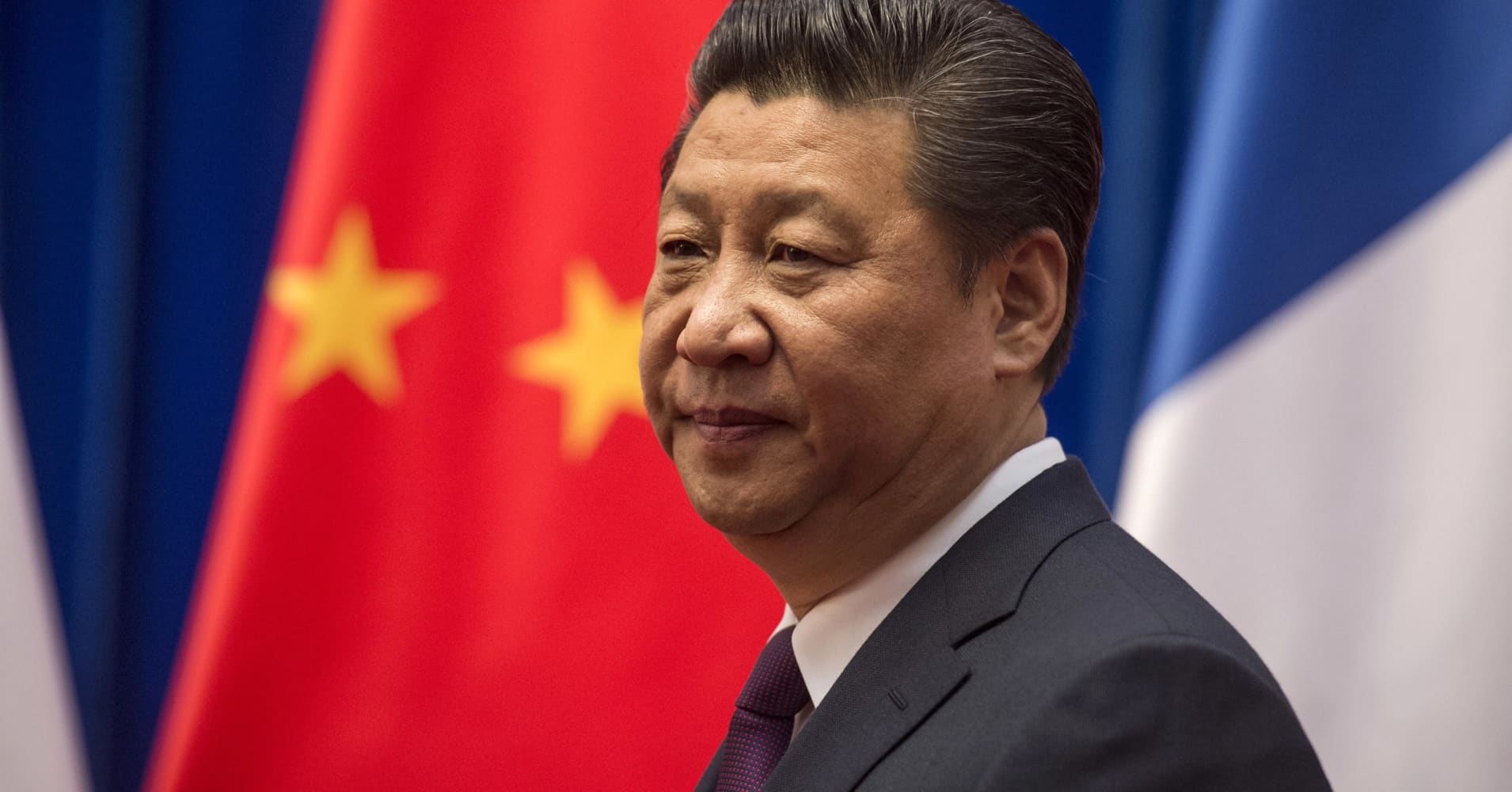The robots are coming to CES! (And we can't wait to meet them)
 Expressive Sophia by Hanson Robotics is one of the most impressive bots of 2016.
Expressive Sophia by Hanson Robotics is one of the most impressive bots of 2016.
There’s nothing better at CES than discovering a robot on the show floor.
Seriously, robots are cool. They are fun. And thanks to the newly released « Rogue One: A Star Wars Story » , public sentiment towards droids is off the charts.
It’s unlikely the CNET team will stumble across anything as endearing new Star Wars droid K-2SO as it scours the halls in Las Vegas. Still, there’s a ton of robo-excitement in the run-up to CES 2017.
Robots have primarily been used as marketing gimmicks or demonstration props at previous shows. That, says IHS analyst Dinesh Kithany, is set to change.
« What we will see is more from the application point of view, » Kithany said. Companies will be looking to explore what consumers can do with a robot, although the robots themselves, he added, will likely be « in the concept stages. »
Robots for consumers typically come in one of three categories. One group is service robots, like the Roomba vacuum and pool-cleaning bots, that perform specific tasks. Then there are social robots, like Pepper or Sanbot that have humanoid features play games and nag you to do everyday chores, like brush your teeth. Fully humanoid robots sit at the top of the heap and are being readied to perform care and nursing functions, such as the picking people up to help them maintain autonomy and stay in their own homes if they are elderly or injured.
The tech might still be at a nascent stage, but it’s expected to take off. Shipments of home robots are set to grow from around 5 million units in 2015 to 13 million units in 2020, according to IHS’s Service Robots & Drones report 2016.
Behind any good robot is good AI. And we seen some impressive leaps forward over the past year, including Go-playing algorithms and Jarvis, Mark Zuckerberg’s smart home AI butler. It’s going to make robots a whole lot more appealing.
Smart assistants have come along way too and, thanks to the likes of Amazon Echo and Google Home , are now more than just voices on our phones. They are precursors to what we can expect to see in consumer robotics.
In one CES panel , a number of robotics experts are set to discuss how improvements in artificial intelligence will help robots become more useful in everyday life. And, of course, evidence of some such improvements will be on show.
« We’re showcasing some advanced AI technology to demonstrate that AI is a reality and available to consumers for everyday communication and entertainment, » said John Rhee, general manager of UBTECH Robotics, which is set to show make several announcements regarding its future robotics range.
We can’t wait to see this robot demonstrate dexterity and intelligent vision by playing chess.
Similarly, Austrian company Robart will use CES to show the off its autonomous navigation software for household robots.
The system, designed for service robots, will allow bots to « recognize their surroundings and communicate intuitively with the user, » CEO Michael Schahpar says. « They will learn ever better and adapt to changing surroundings. »
Taiwan’s Industrial Technology Research Institute is also set demonstrate some essential robotic skills involving computer vision at the show. Researchers will show how a robot is able to distinguish between various chess pieces and their locations on the board, as well as between various coffee cups, their locations and fill levels.
Hanson Robotics, the maker of realistic humanoid robots that feature a flexible, responsive skin called « frubber, » is a company we’ll keep a close eye on at CES. A company spokesman says customers are keen to get hold of humanoid robots like Hanson’s, which have lifelike facial movements.
Earlier this year Hanson showed off its Sophia robot , which is capable of performing a full range of human facial expressions. At CES, Hanson is due to give its very first public demonstration of its Professor Einstein robot.
Others are similarly optimistic about this robot form factor.
« 2017 is the year in which we will begin to see humanoid robots become home companions, » said UBTECH’s Rhee. His company is responsible for creating Alpha 2, a short humanoid social robot designed to make household life easier by setting reminders and controlling smarthome devices like lights and locks.
If you’re hoping you’ll find the ultimate robot butler or a reprogrammed KX-Series security drone — it’s a « Star Wars » thing and we’re really into « Star Wars » — at CES, 2017 probably won’t be your year.
TankBot is the first Jimu Robot to run on tank treads.
Still, you can expect to see a host of new consumer robots focused on entertainment and education, especially for teaching kids to code. New designs of UBTECH’s Jimu robots that offer the familiar snap-together programmable creatures but with increased mobility, being one example.
We’ll also likely see a number of companies showcasing hardware and software brought together by AI. These projects will give us a glimpse of the skills future robots might have and that could persuade people to think about bringing one home.
At the very least, we’ll find some cute bots to dream about.
© Source: https://www.cnet.com/news/ces-2017-the-robots-are-coming-and-we-cant-wait-to-meet-them/
All rights are reserved and belongs to a source media.


 Polarizing filters can be an essential part of a photography tool set, as they suppress glare, make blue skies pop, and offer an additional way to control the light in your scene. And if you have some old electronics that you can mine for spare parts, you might already have a filter.
Polarizing filters can be an essential part of a photography tool set, as they suppress glare, make blue skies pop, and offer an additional way to control the light in your scene. And if you have some old electronics that you can mine for spare parts, you might already have a filter. 
 We spend a third of our lives asleep, so we all know how important sleep is, but are we doing it right? With the new year approaching, and ‘get more sleep’ an oft-heard resolution, you need to know the best way technology can help you do that.
We spend a third of our lives asleep, so we all know how important sleep is, but are we doing it right? With the new year approaching, and ‘get more sleep’ an oft-heard resolution, you need to know the best way technology can help you do that. 
 SHANGHAI: China has recovered 2.3 billion yuan (US$331.27 million) in losses from graft in the first 11 months of this year from across more than 70 different regions and countries, the country’s corruption watchdog said on its official website on Saturday.
SHANGHAI: China has recovered 2.3 billion yuan (US$331.27 million) in losses from graft in the first 11 months of this year from across more than 70 different regions and countries, the country’s corruption watchdog said on its official website on Saturday.
 SHANGHAI: One of China’s top coal-producing provinces has vowed to slash its level of fine particle pollution by one-fifth by 2020, the official Xinhua news agency reported on Saturday, citing the provincial government.
SHANGHAI: One of China’s top coal-producing provinces has vowed to slash its level of fine particle pollution by one-fifth by 2020, the official Xinhua news agency reported on Saturday, citing the provincial government.
 CHINA’S military has become alarmed by what it sees as U. S. President-elect Donald Trump’s support of Taiwan and is considering strong measures to prevent the island from moving toward independence, sources with ties to senior military officers said.
CHINA’S military has become alarmed by what it sees as U. S. President-elect Donald Trump’s support of Taiwan and is considering strong measures to prevent the island from moving toward independence, sources with ties to senior military officers said. 
 State broadcaster Central China Television has rebranded its international networks and digital presence under the name China Global Television Network as part of a push to consolidate its worldwide reach.
State broadcaster Central China Television has rebranded its international networks and digital presence under the name China Global Television Network as part of a push to consolidate its worldwide reach. 
 Chinese President Xi Jinping said Saturday that his government would continue to focus on poverty alleviation at home and resolutely defending China’s territorial rights on the foreign front.
Chinese President Xi Jinping said Saturday that his government would continue to focus on poverty alleviation at home and resolutely defending China’s territorial rights on the foreign front. 
 China will ban all domestic ivory trade within the country by the end of 2017, the country’s announced Friday, in a “game-changing” move that wildlife campaigners say may help protect the species against poachers. This move is significant for the world’s elephant population, as conservationists estimate that are killed by poachers each year, mostly to satisfy the demand for ivory products in Asia —. A published in September showed that the savannah elephant population has declined 30% in the past seven years, mostly due to poaching. The survey placed the number of wild elephants on the continent at just less than 400,000. The first phase of China’s ivory trade ban will be implemented by the end of March, when the government begins the process of shutting down the country’s 34 processing facilities and 143 designated ivory trading venues. In , an official with the State Forestry Administration said that “dozens” of these organizations will be closed by April 1, 2017. The Chinese Ministry of Culture will assist employees of the ivory trade in finding new occupations that utilize their carving skills, likely in antique restoration and maintenance. Per the directive, China will also step up its enforcement of illegal ivory sales and set up a system to regulate the transfers or sales of those ivory goods currently owned by citizens. All domestic processing and trading of ivory will be shut down by Dec. 31, 2017. Animal welfare and conservation groups worldwide are applauding China’s decision. president and CEO Carter Roberts called it “a game changer for elephant conservation”. In a press release, the Asia Director, Aili Kang wrote, “This is great news that will shut down the world’s largest market for elephant ivory. I am very proud of my country for showing this leadership that will help ensure that elephants have a fighting chance to beat extinction.” The Chinese government also plans to launch a public awareness campaign about the brutalities of the ivory trade to discourage consumers, a move through which conservation groups have seen success in China in the past. A four-year anti-ivory campaign by the International Fund for Animal Welfare — which depicted a young elephant excited about his new tusks walking with his mother — reached 75% of the urban Chinese population. showed that this specific PSA had reduced the number of Chinese people likely to purchase ivory from 54% of the population to 26%.
China will ban all domestic ivory trade within the country by the end of 2017, the country’s announced Friday, in a “game-changing” move that wildlife campaigners say may help protect the species against poachers. This move is significant for the world’s elephant population, as conservationists estimate that are killed by poachers each year, mostly to satisfy the demand for ivory products in Asia —. A published in September showed that the savannah elephant population has declined 30% in the past seven years, mostly due to poaching. The survey placed the number of wild elephants on the continent at just less than 400,000. The first phase of China’s ivory trade ban will be implemented by the end of March, when the government begins the process of shutting down the country’s 34 processing facilities and 143 designated ivory trading venues. In , an official with the State Forestry Administration said that “dozens” of these organizations will be closed by April 1, 2017. The Chinese Ministry of Culture will assist employees of the ivory trade in finding new occupations that utilize their carving skills, likely in antique restoration and maintenance. Per the directive, China will also step up its enforcement of illegal ivory sales and set up a system to regulate the transfers or sales of those ivory goods currently owned by citizens. All domestic processing and trading of ivory will be shut down by Dec. 31, 2017. Animal welfare and conservation groups worldwide are applauding China’s decision. president and CEO Carter Roberts called it “a game changer for elephant conservation”. In a press release, the Asia Director, Aili Kang wrote, “This is great news that will shut down the world’s largest market for elephant ivory. I am very proud of my country for showing this leadership that will help ensure that elephants have a fighting chance to beat extinction.” The Chinese government also plans to launch a public awareness campaign about the brutalities of the ivory trade to discourage consumers, a move through which conservation groups have seen success in China in the past. A four-year anti-ivory campaign by the International Fund for Animal Welfare — which depicted a young elephant excited about his new tusks walking with his mother — reached 75% of the urban Chinese population. showed that this specific PSA had reduced the number of Chinese people likely to purchase ivory from 54% of the population to 26%.

